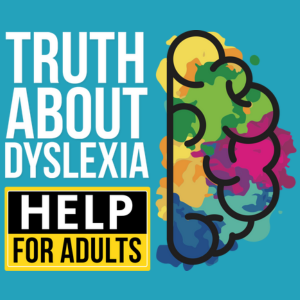
6 Apps For Dyslexic Thinkers
Share
Have you ever stared at your to-do list and thought, “Where do I even start?” You’re not alone. In the latest podcast episode (player above), I shared my top apps that make living with dyslexia and ADHD a bit smoother, especially when juggling work and deadlines.
In this post, I’ll give you a quick rundown of what these tools can do, why I rely on them, and how they might help you too. If you’ve been searching for ways to stay on track and avoid overwhelm, you’re in the right place.
How Apps Help Me Manage Dyslexia and ADHD
I’ve tried a bunch of tools over the years. Some made a difference straight away. Others fell flat. For me, the best apps are those that offer immediate support and don’t take much mental energy to set up.
When I recall the hurdles I faced early on, I laugh at how I muddled through without the tech we have now. Hours got wasted on tasks that took minutes once I found the right tool. Suddenly, I didn’t have to worry about re-reading everything twice or typing the same email five times.
As I mentioned in the episode:
“I used to write and rewrite the same paragraph because I’d forget half of what I wanted to say. Now, I can just capture it in an app and see it all right there.”
Grammarly and ChatGPT: Your Writing Allies
Spelling and grammar used to feel like never-ending obstacles. Sometimes, I’d finish a piece of writing, then find so many mistakes that I’d feel like throwing my laptop out the window. That’s why Grammarly is a life-saver. It flags typos, suggests simpler words, and tells me when I sound too formal or complicated.
Once I polish my text, ChatGPT steps in for idea generation. It’s also great for breaking down complex topics into smaller bites. Here’s how I use them:
- Grammarly.com: Automatic grammar, spelling, and clarity checks.
- ChatGPT: Generates quick outlines and helps me rewrite tough spots.
Having both is perfect for anyone who struggles to get words on paper. Grammarly catches your basic slip-ups, and ChatGPT helps you shape your thoughts when your brain feels cluttered.
Otter.ai: Transcripts at the Ready
Recording voice notes can be a lifesaver if you’re prone to forgetting details. During busy meetings, I’d often realise I missed half the conversation once it ended. Otter.ai records it all and transcribes it, so you can check it later when your mind is calmer.
Think of Otter.ai as your personal note-taker. It’s a huge relief to rely on it for catching those moments you’d otherwise forget. Instead of worrying about missing details, you can focus on the current conversation. Then, you can skim the transcript afterwards or grab quotes for your own notes.
WhatsApp, Google Calendar, and Loom.com: Staying Connected
WhatsApp is probably the simplest of the bunch, but it helps me cut through clutter. I’ve made groups with friends and colleagues where we share quick updates. No empty small talk, just the highlights or urgent questions. It’s become my go-to for short voice memos when typing feels too slow.
Google Calendar is another gem. I love how easy it is to colour-code events and even add emojis to each appointment. It gives me an instant snapshot of my day, and the bright colours stop me from mixing up my morning chat with an afternoon deadline. I often start the day by reviewing the calendar on my phone. Seeing those emojis gives me a small mood boost, which is nice for a quick dopamine hit.
Loom.com is a handy way to send screen recordings or video messages. Sometimes I need to show a client or colleague how something works. Instead of writing a long email, I just click record, talk them through it, and send the link. It saves everyone time. They can replay it instead of sending me more “Wait, how do I do that again?” messages.
Quick Tips for ADHD-Friendly App Use
These apps all have amazing features, but it’s easy to slip into tech overload. Here’s how I keep it simple:
- Plan Your Day: Record the night before which app tasks you need to handle.
- Limit Notifications: Better to check them when you’re ready, rather than get bombarded all day.
- Create Shortcuts: Use bookmarked links or pinned apps so their icons are instantly visible.
- Set Up Automations: For instance, schedule Otter.ai to record your daily check-in meeting.
The less you have to remember, the more mental clarity you’ll have.
Key Takeaways
- Grammarly catches writing slip-ups and makes editing painless.
- ChatGPT offers brainstorming power when you’re stuck.
- Otter.ai records and transcribes meetings, saving you from memory gaps.
- WhatsApp keeps team chats direct and voice notes are a quick way to share ideas.
- Google Calendar with colour-coding and emojis helps you plan your day visually.
- Loom.com streamlines how you share tutorials, team feedback, and screen walkthroughs.
If any of these tools caught your eye, why not try them this week? A small tweak in your workflow might give you surprising results—less stress, fewer mistakes, and more mental energy to focus on what matters most to you.
Curious to learn more about how I use each one? Listen to the full podcast episode above, where I dive deeper into practical tips and share a few personal stories about living and working with dyslexia and ADHD.

